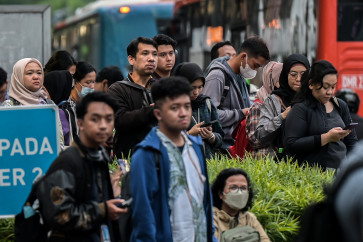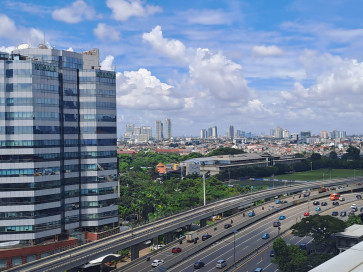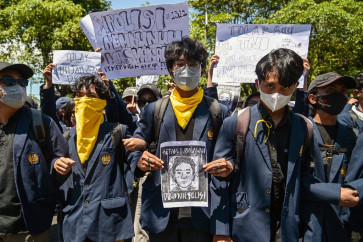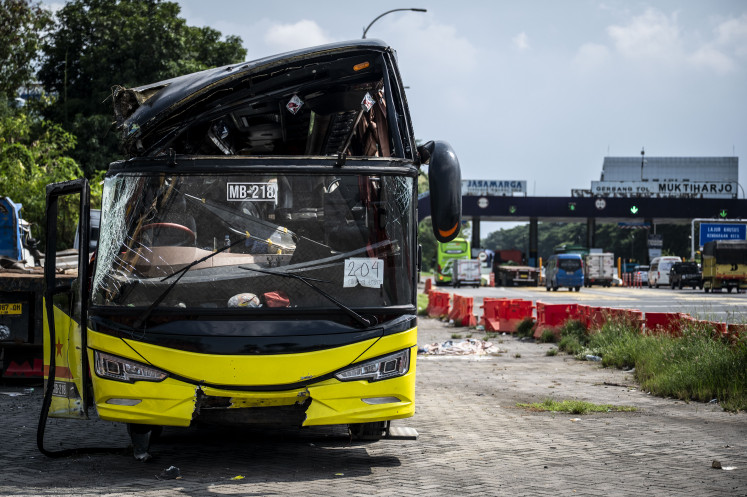Popular Reads
Top Results
Can't find what you're looking for?
View all search resultsPopular Reads
Top Results
Can't find what you're looking for?
View all search resultsTime for Indonesia to lead in rubber processing
In the last few decades the effects of climate change have slowly taken root
Change text size
Gift Premium Articles
to Anyone
I
n the last few decades the effects of climate change have slowly taken root. It has taken a long time for international authorities and governments to accept that the time to act has come; humans cannot afford to do nothing in the face of dire threats to their life, health, environment and the global economy.
Admittedly, some efforts have been initiated to prevent further increases in the generation of greenhouse gases (GHGs), such as better engine efficiency, better insulation of buildings and the use of renewable energies.
But looking at Indonesia: have we realized all the possibilities for renewable sources? In 2014, Indonesia expected to yield about 3.5 million tons of natural rubber. Rubber trees have the highest potential of carbon sequestration.
The crop yields of small landholders in Indonesia 'only' amounted to about 650 kilograms per hectare per year (kg/ha/yr). Meanwhile, high-yielding clones in monocultures reached up to more than 2,000 kg/ha/yr.
There are two options if Indonesia wants to increase rubber production and carbon sequestration. First is the expansion of rubber planting with a yield of about 650 kg/ha/yr or more. That means, under 'normal conditions', destruction of rainforest. The second is increasing the yield level by using intercropping, which besides boosting rubber production, also leads also to a wider income base for small landholders and the preservation or stabilization of biodiversity.
Indonesia, it should be said, has the lowest level of downstream development in the natural rubber industry worldwide. This fact creates additional opportunities for economic development, both in agriculture and in industrial processing. In 2013, Indonesia exported 84 percent of its rubber production as raw material.
Until January 2011 there was little incentive to increase the chain in value addition. Until that time ' with US$250.36 per pound at its maximum price ' money was virtually pouring out of the rubber tree. Today, at about $72.72 per pound, more strategic planning is a must.
Among other industries, the bedding industry offers vast potential by increasing the use of natural rubber latex foam.
Today, the most commonly used material in the foam-bedding industry for mattresses and pillows is polyurethane (PU) foam. PU is based on oil, which we know is limited. The same is true for styrene-butadiene rubber (SBR) latex, which is a synthetic copy of natural latex ' but is also based on oil and its derivatives.
Indonesia ' as the second-largest rubber producing country and more than 260 million inhabitants ' has a great potential to set up a sustainable production facility for natural foam bedding products, both for its own population as well as for export.
In the near future, the introduction of the so-called carbon footprint can be expected to assume global proportions, substantially influencing consumers, both private and industrial, in their choice of preferred materials. Indonesia has a great opportunity to make a meaningful contribution to this new development and take advantage of it.
With the implementation of vulcanization of latex foam with high-frequency (patent: 103 38 367) a new technological process enables manufacturers to produce cheaper and more sustainably. With this new technology the heating of the latex foam is no longer carried out by slow and inefficient steam-heating, but by very fast and direct high-frequency energy transfer.
Since compared to the old one this technology enables manufacturers to produce latex foam without any (pin) holes, they are free to design completely new shapes and suspension requirements.
Indonesia has an underdeveloped rubber industry, as mentioned a few years ago by Nelly Rahman and Uhendi Haris from the Indonesian Rubber Research Institute in Bogor, West Java. Both strongly affirmed that Indonesia should be able to become a leading rubber industrial nation. They said the establishment of a creative and modern latex manufacturing plant to produce mattresses, toppers and pillows for the bedding industry was inevitable.
The integration with existing rubber plantations may offer considerable benefits and advantages, such as flexibility in periods of suppressed rubber prices on the world market, reduction of transportation costs, coordinated social benefits for small landholders, factory workers and the municipal government; and in-house propagation of knowledge about rubber plantation and rubber and latex technology.
The Indonesian government authorities responsible for both agricultural development and for industrial planning should be approached to endorse projects for its multi-faceted benefits to achieve the objectives of its economic-diversification policies.
__________________
The writer, based in Bremen, Germany, is an inventor and developer of patented latex foam technologies.










